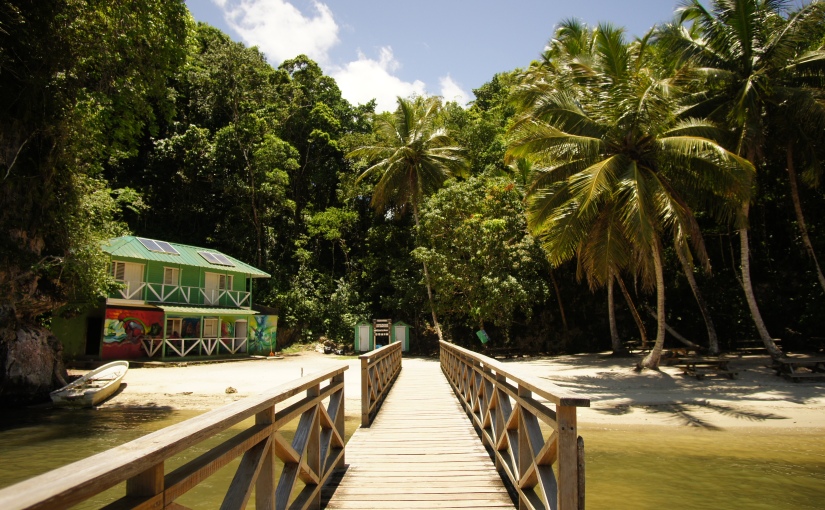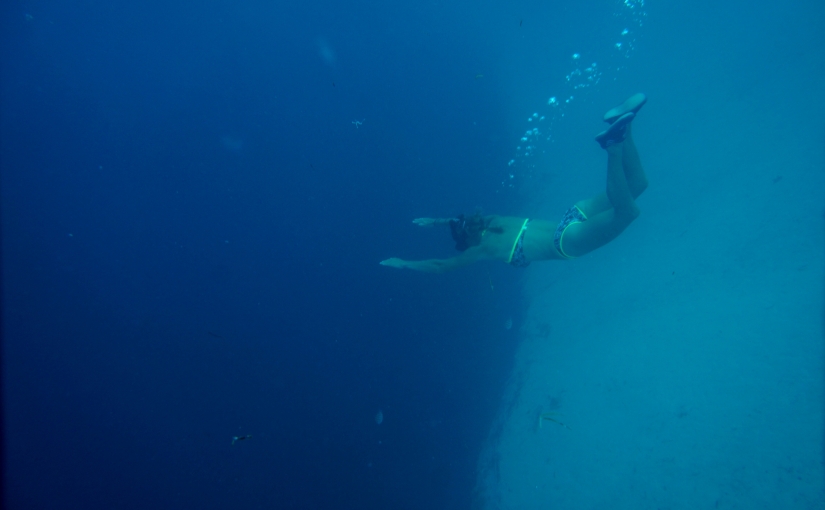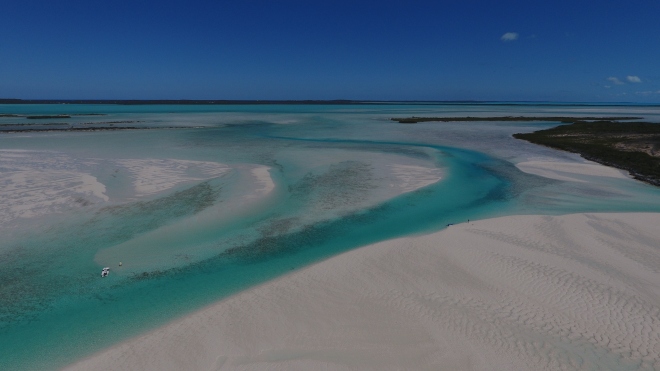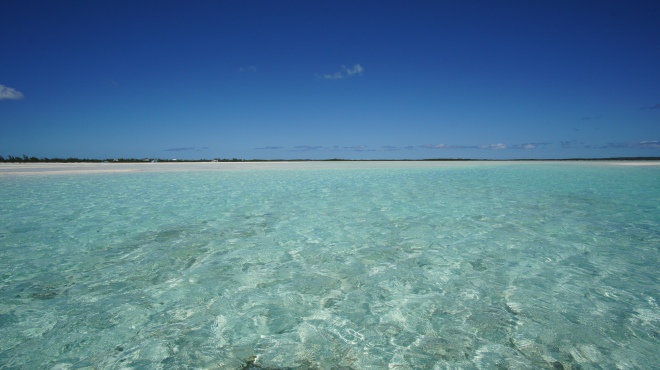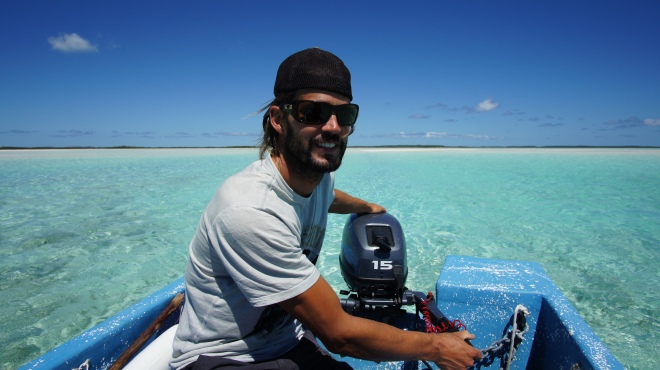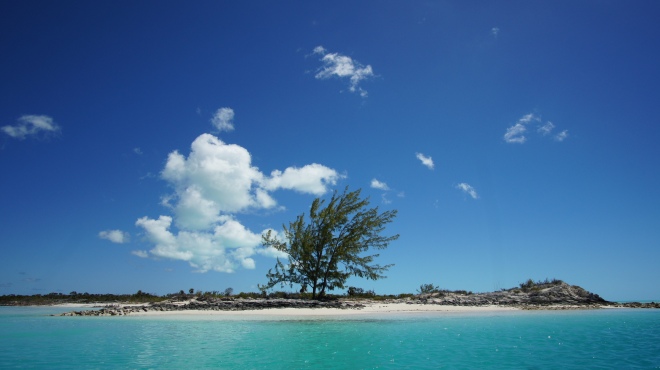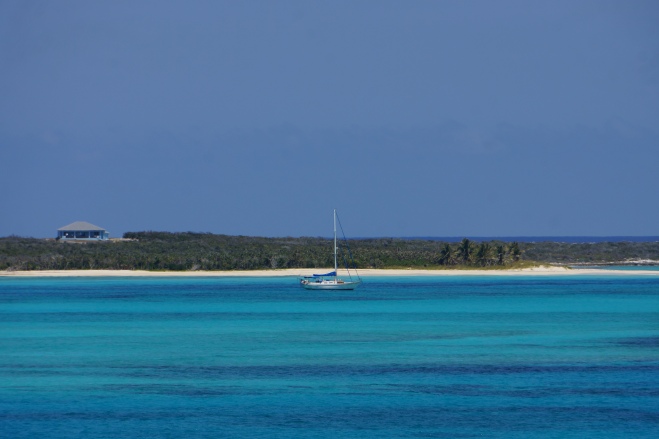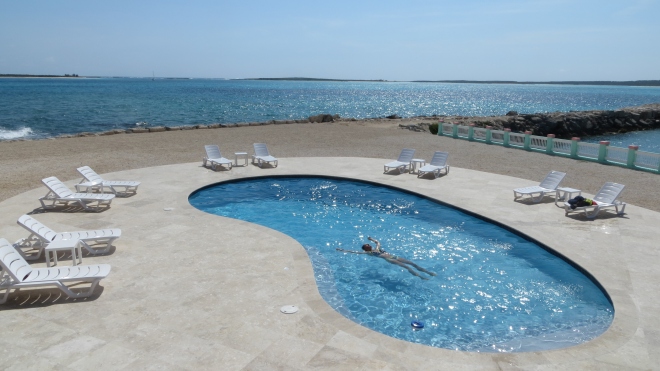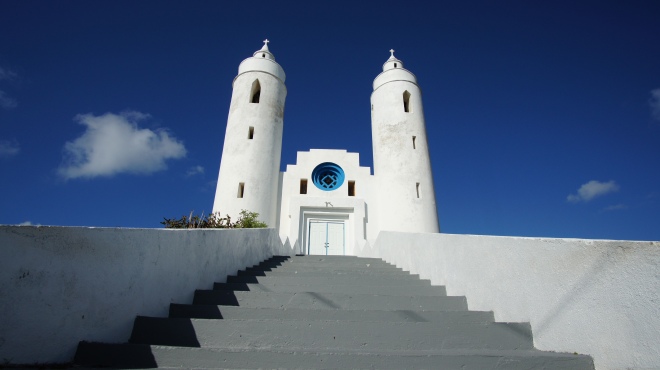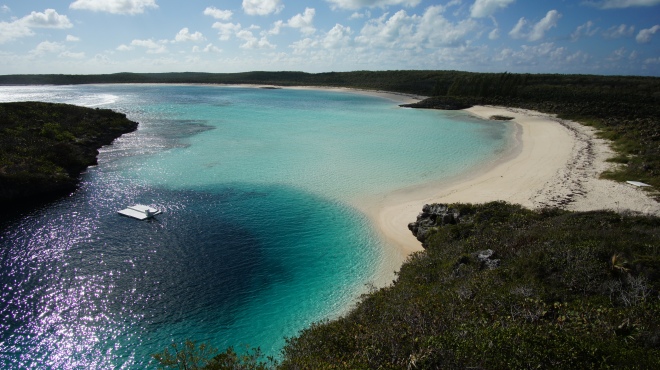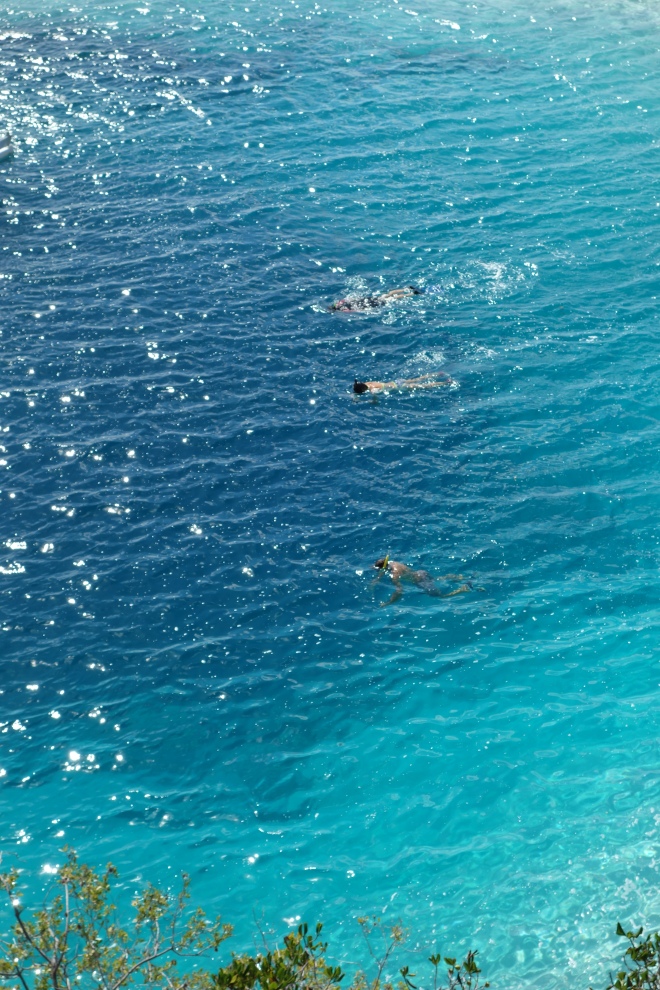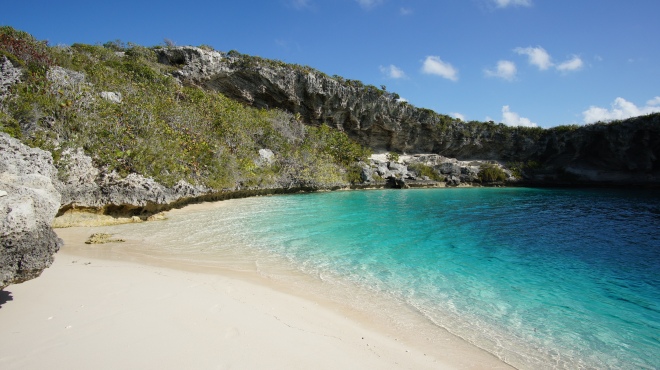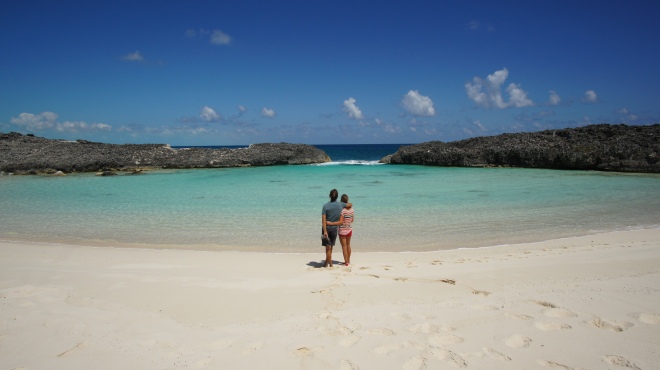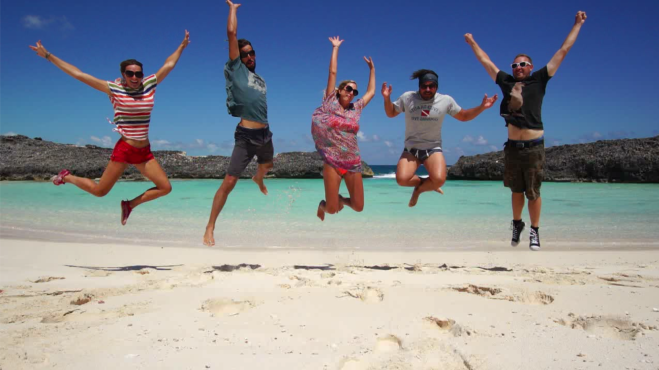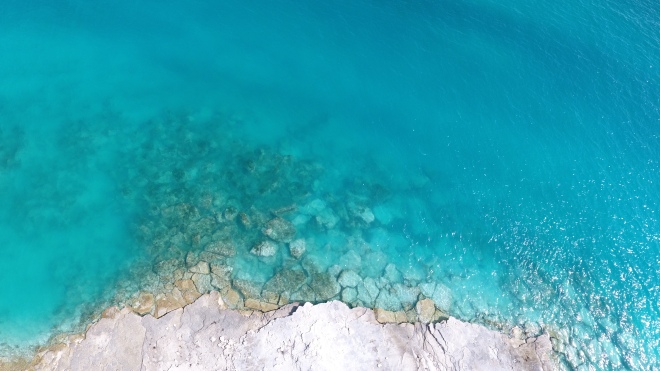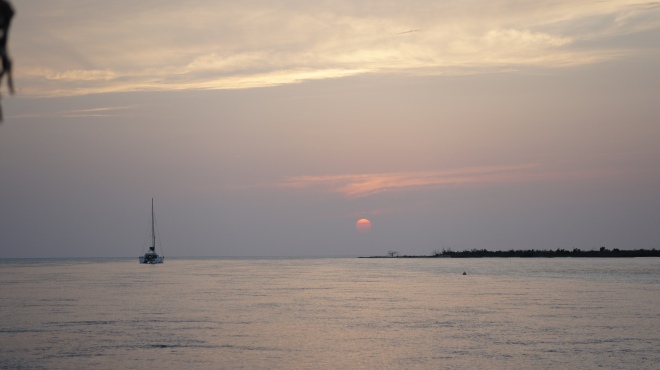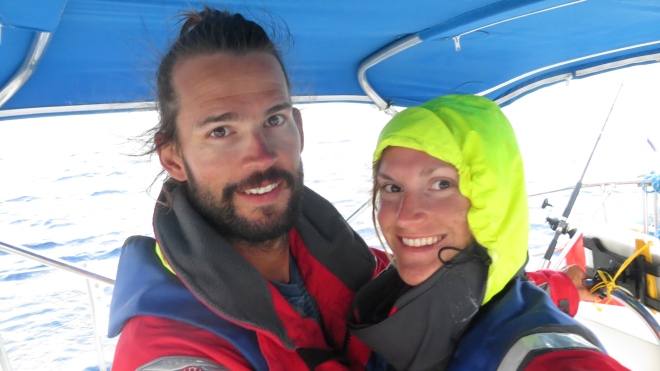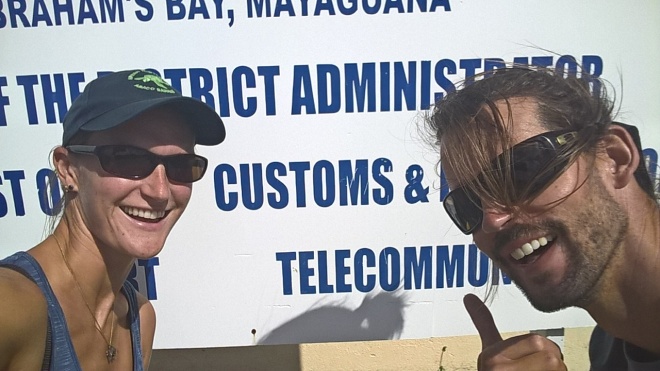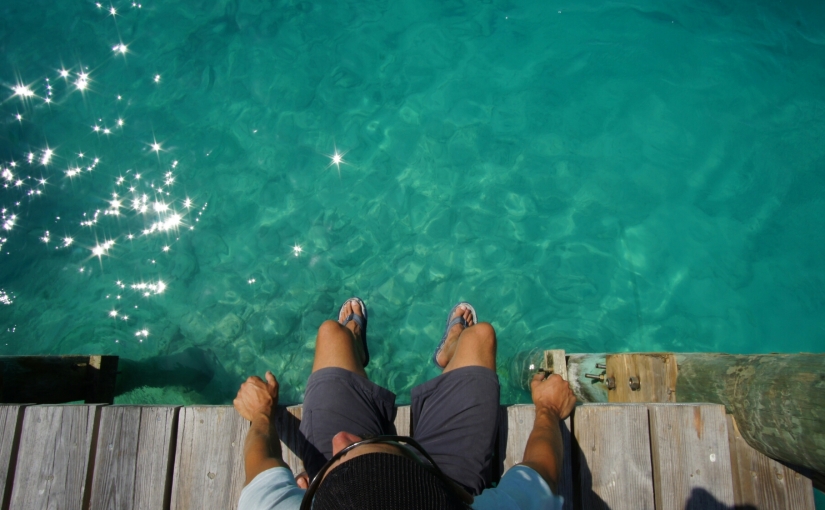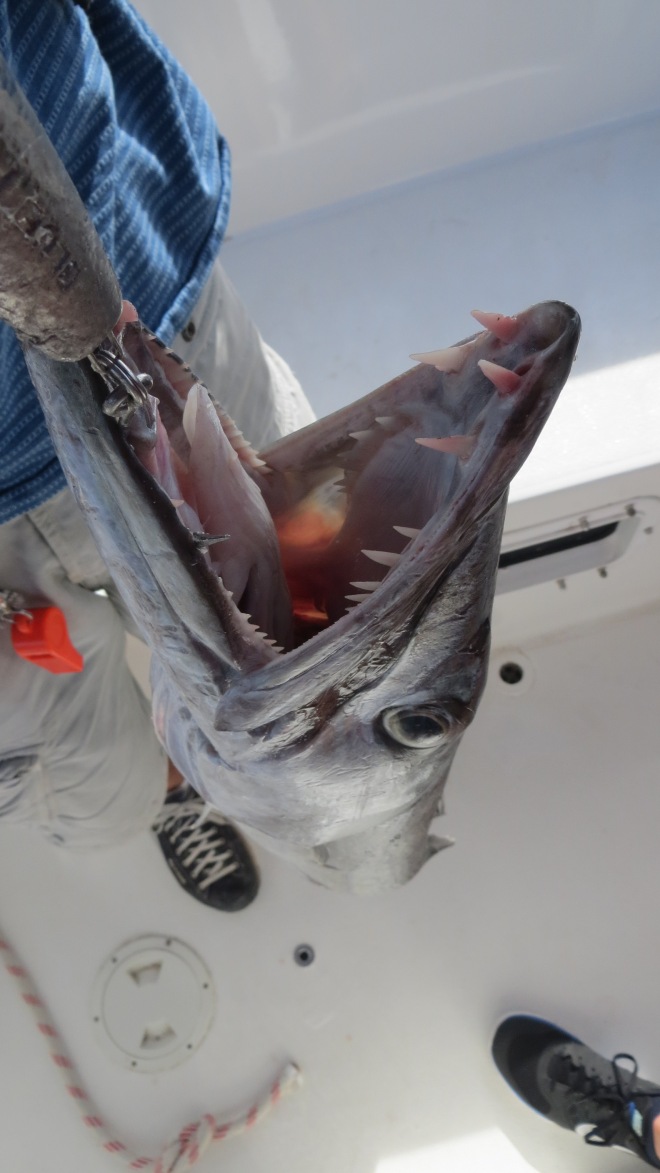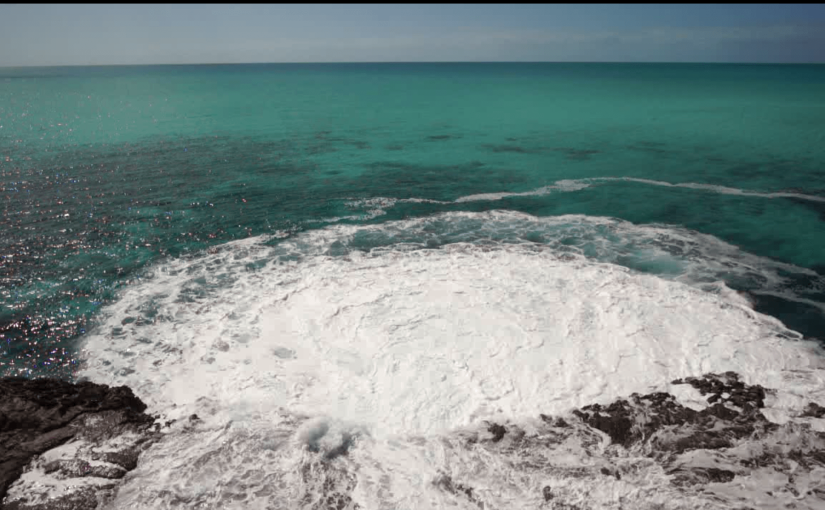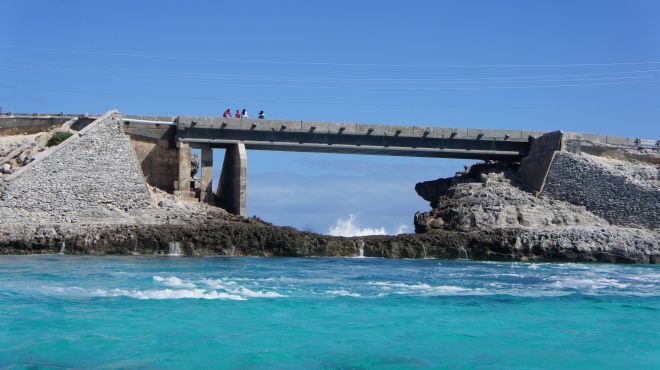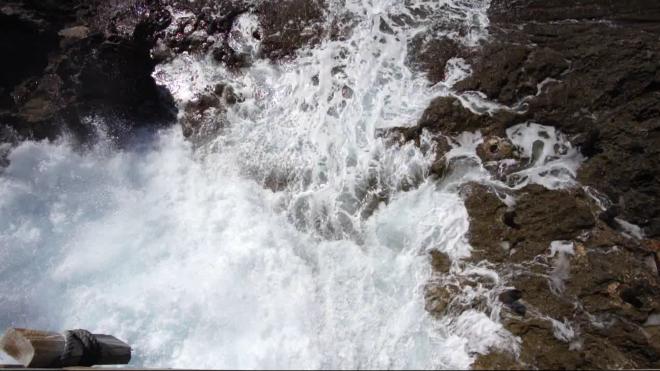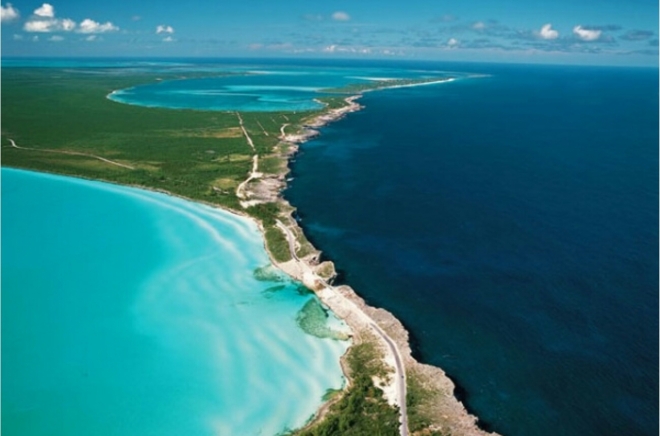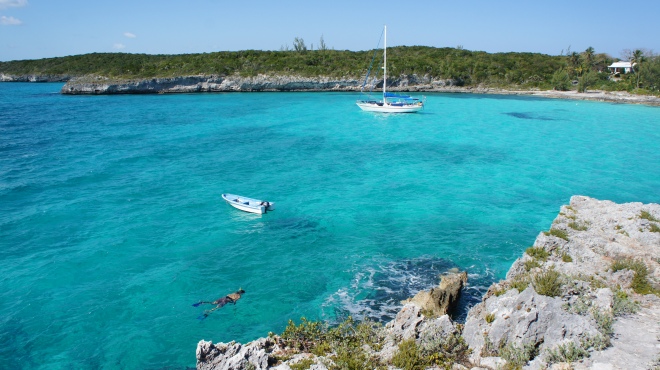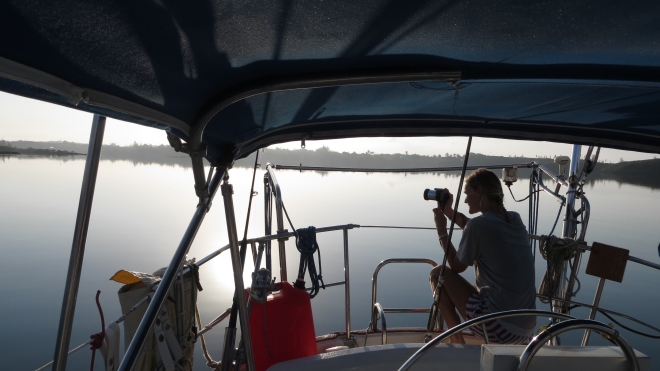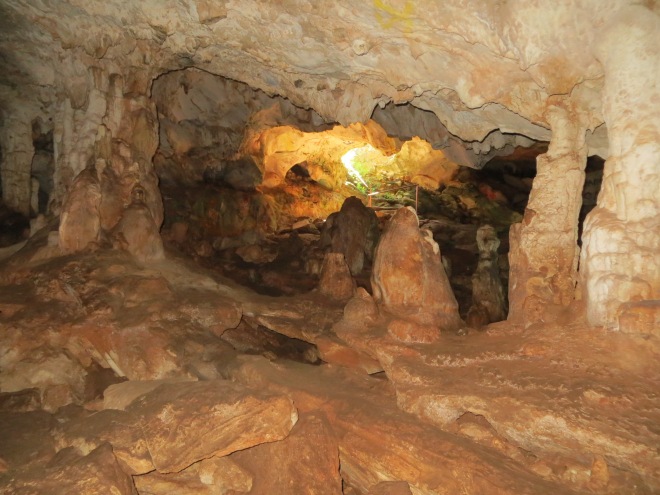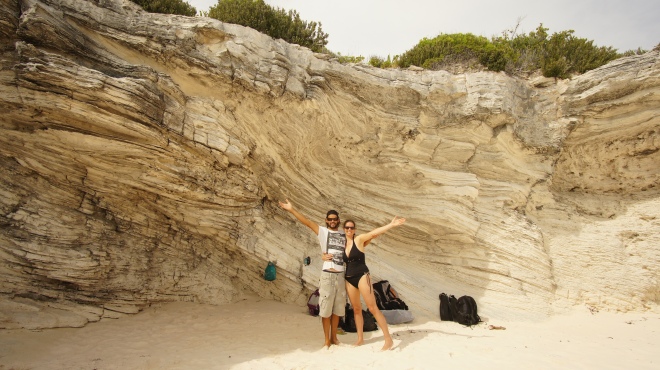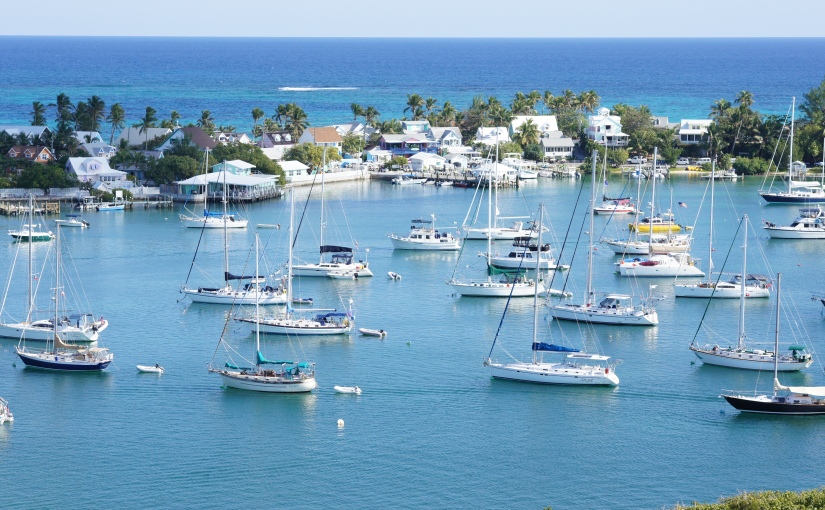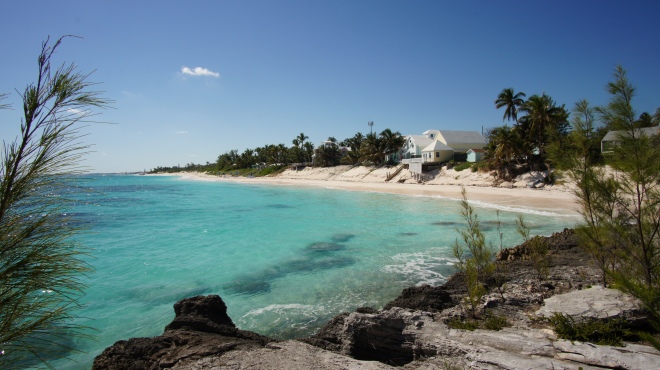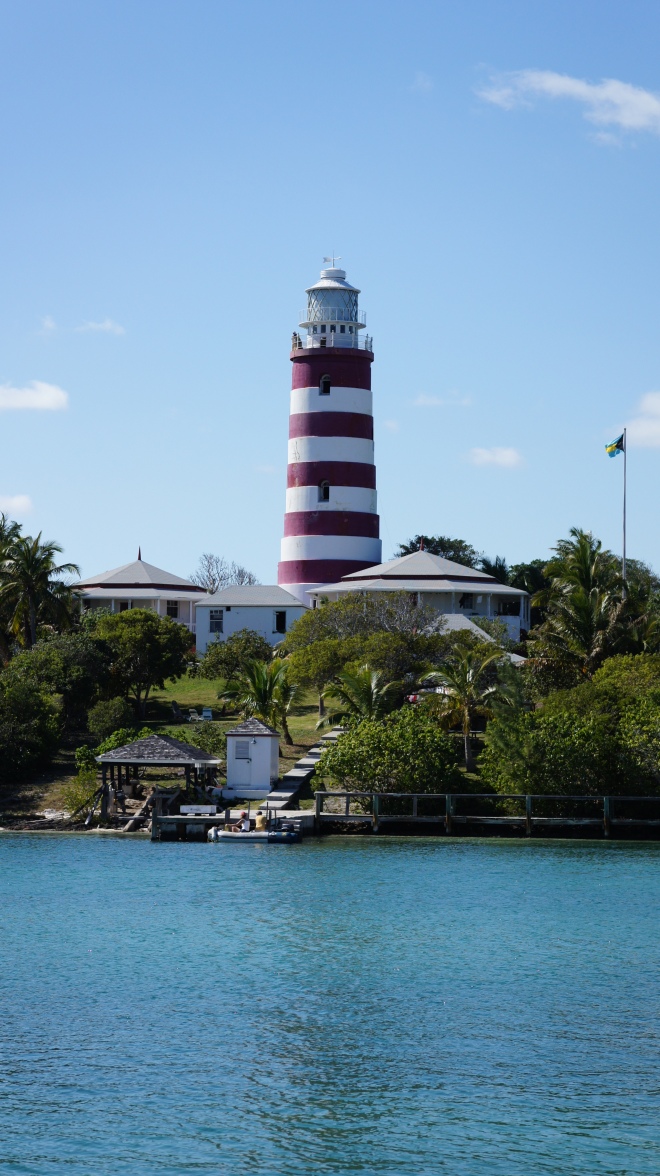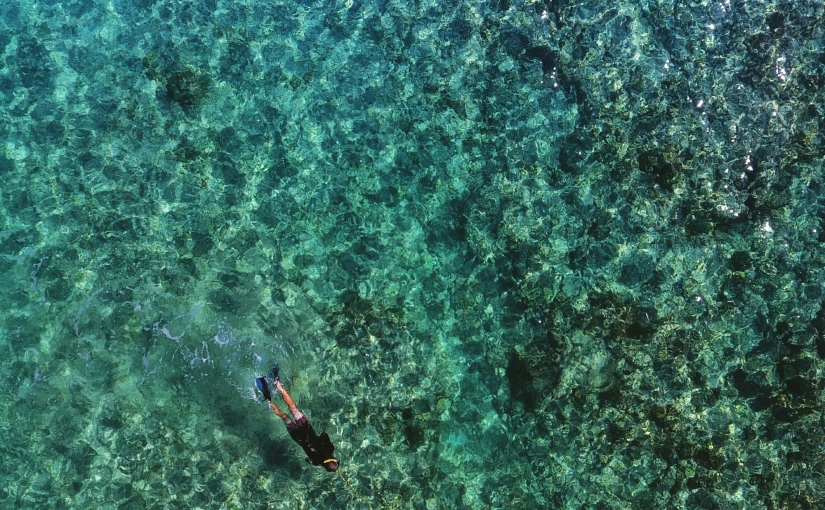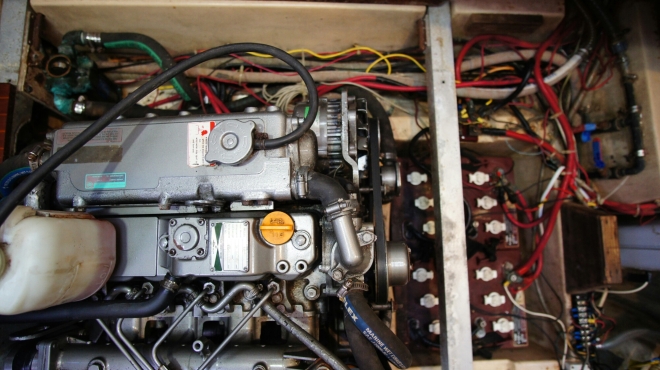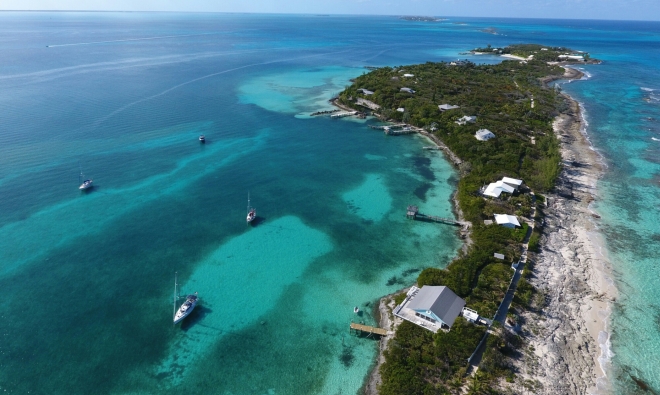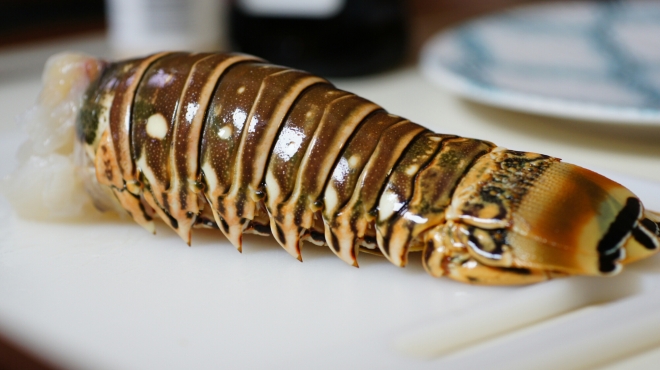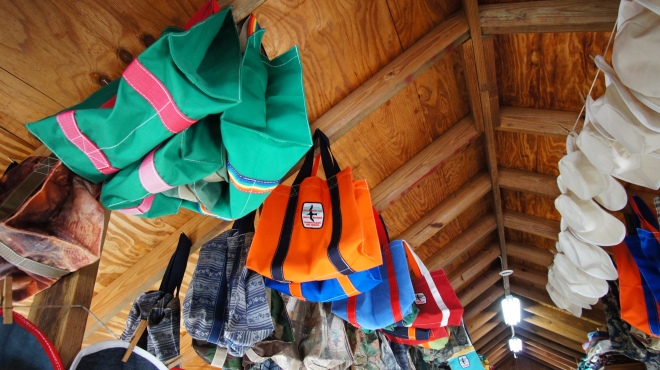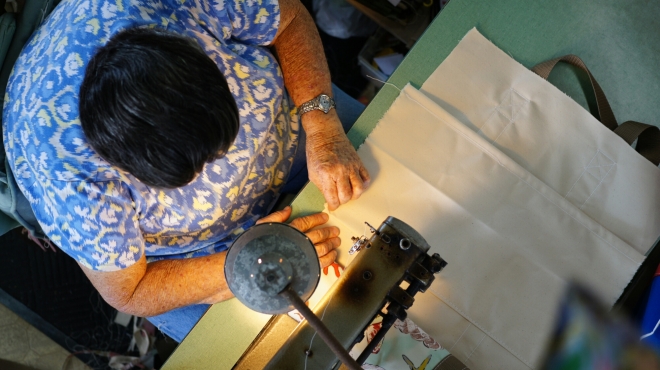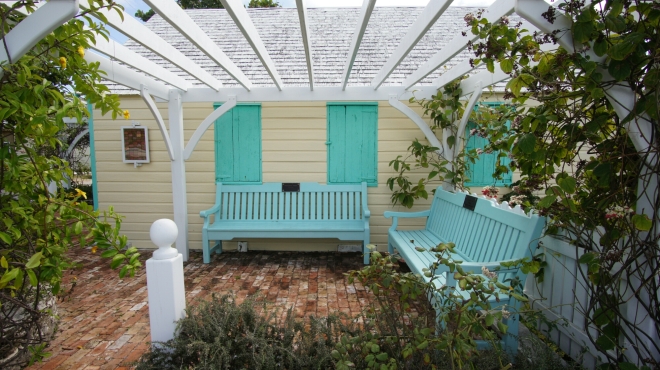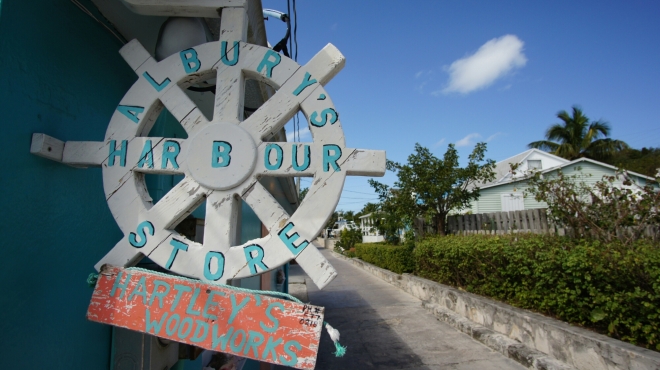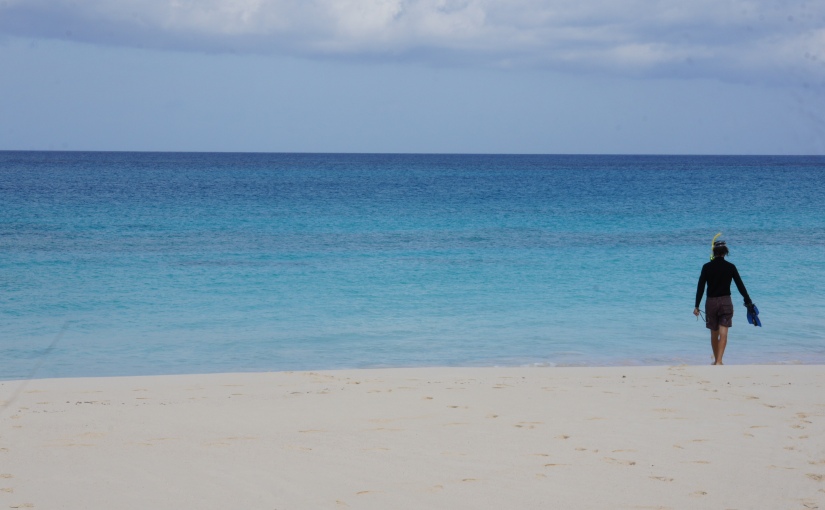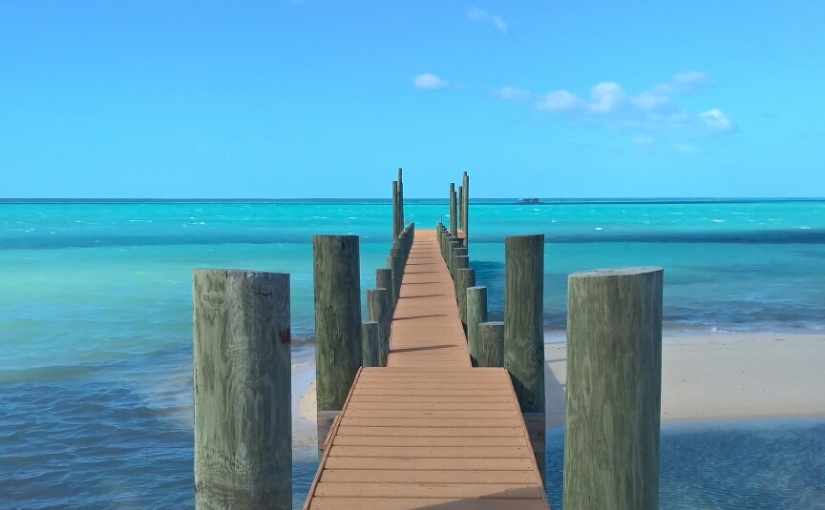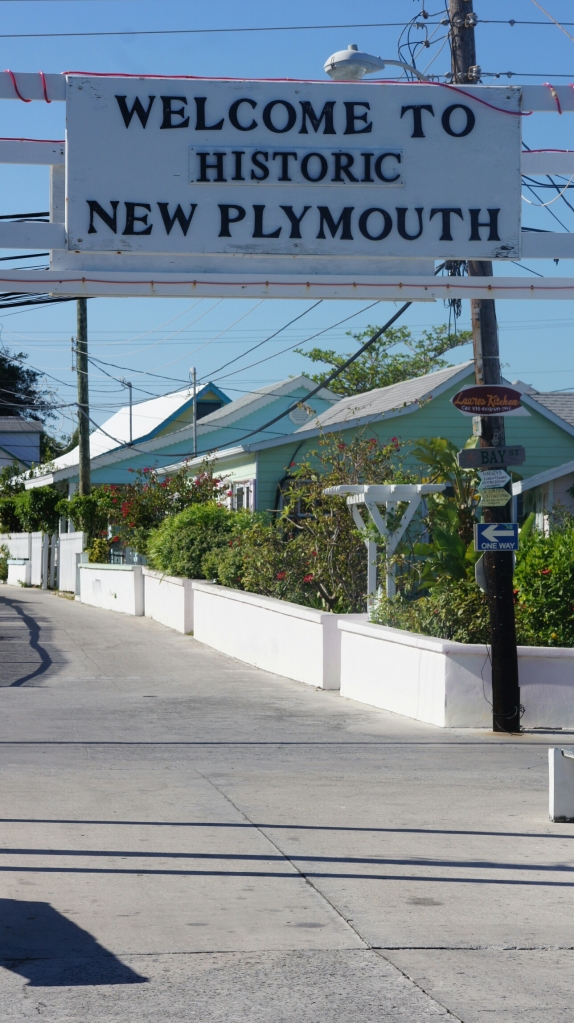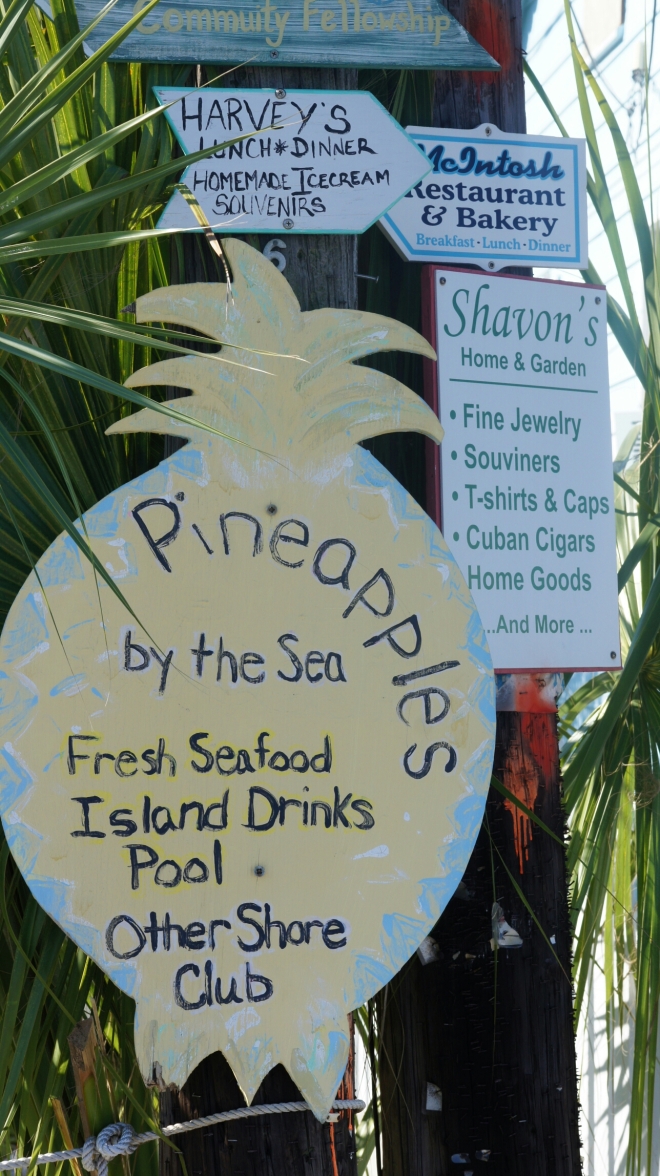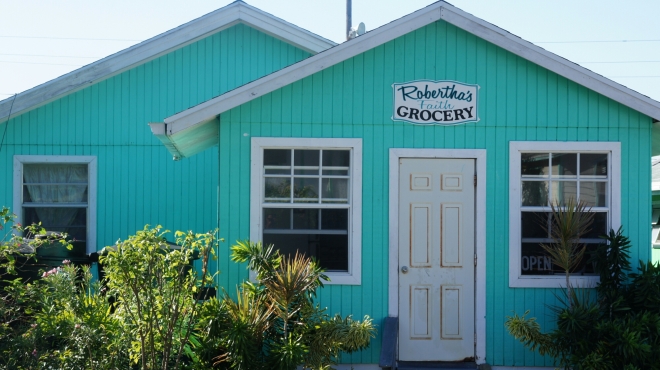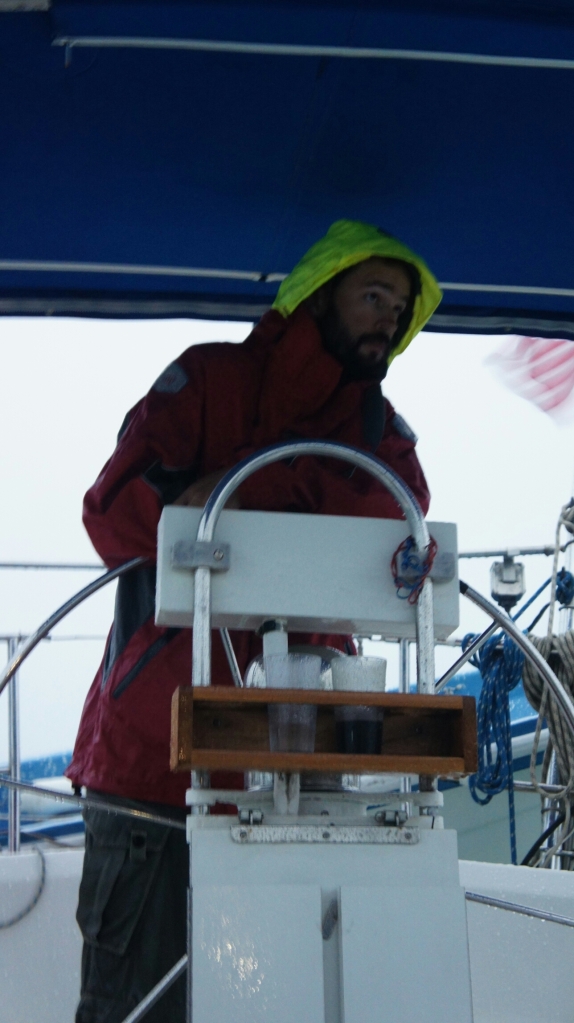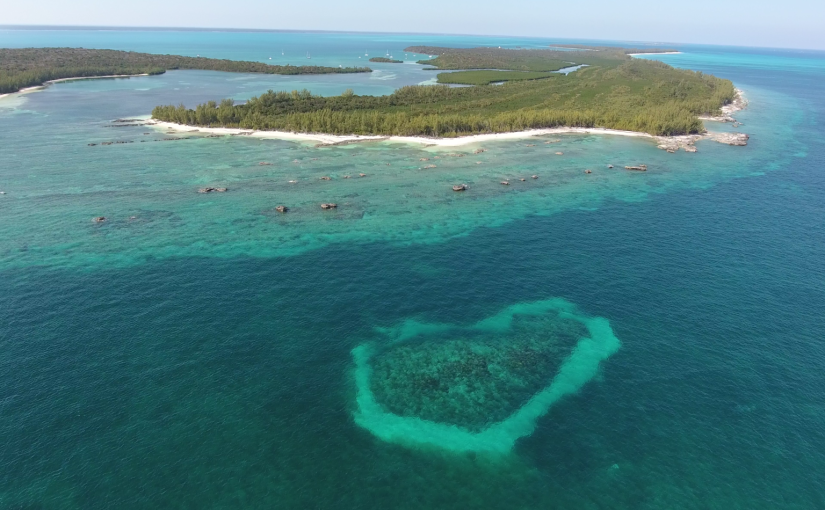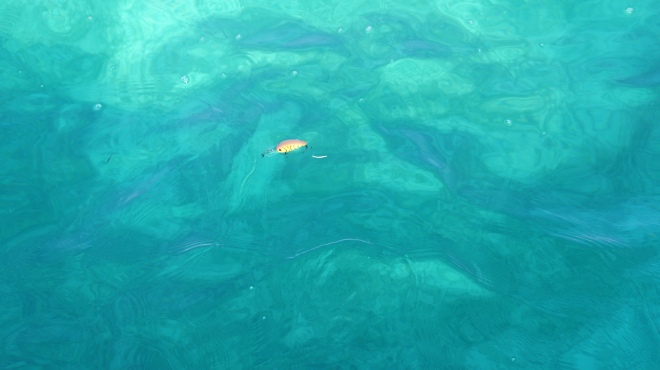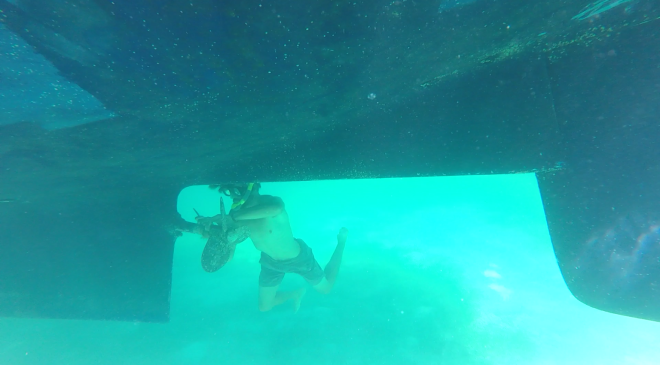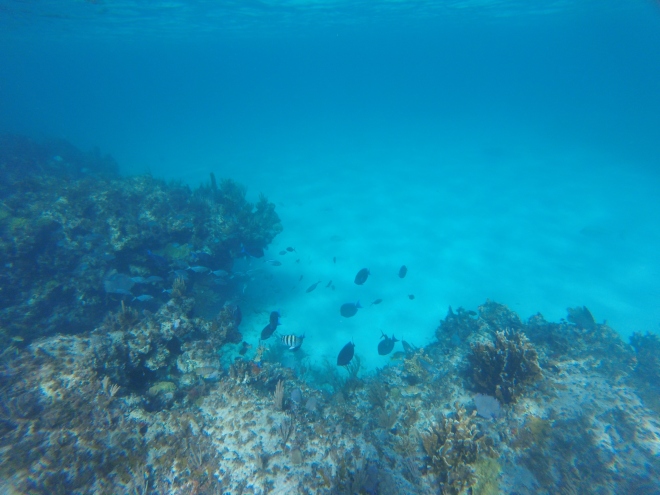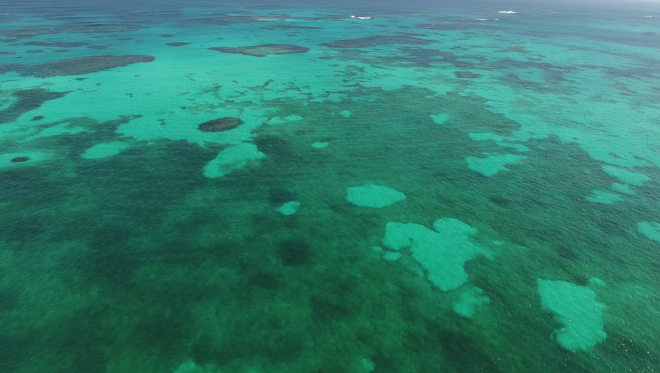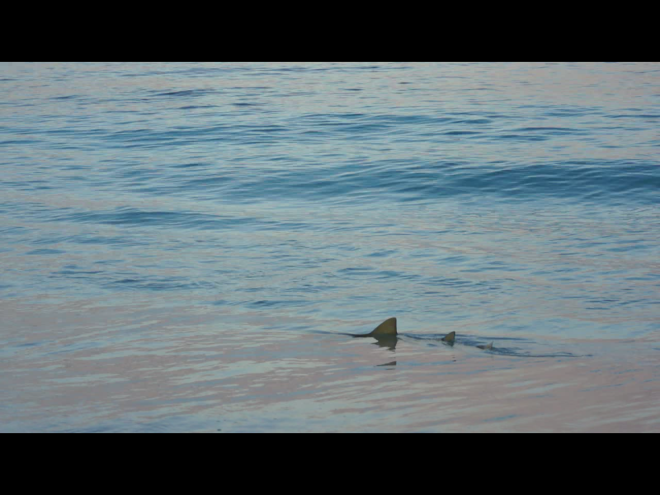We’re around two miles off the coast of the Dominican Republic when it first hits me. That smell! A very distinctive aroma.
Earthy, damp, lush, green….
In fact, that’s it! That’s exactly what it reminds me of….a greenhouse.
The katabatic wind is picking up the scent from the land and carrying it downwind. It’s a wake up call that we’re entering a new country, but not only that, a new landscape too.
The coastline here is so different to what we have experienced over the last few months. The green hills emerge sharply out of the sea and the morning mist is clearing, slowly revealing small hillside settlements and occasional dirt-track roads.
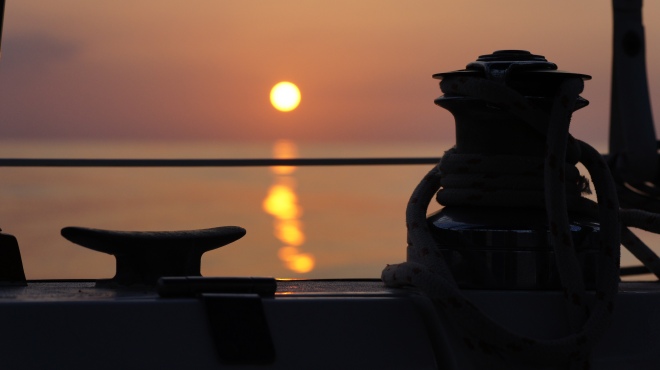
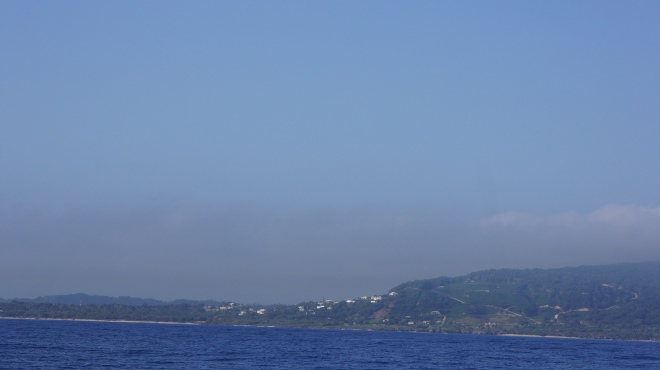
As we navigate our way in to Luperon anchorage the red marker buoy takes us precariously close to the rocky coastline. The water is calm here though and a sharp turn to the right after the buoy takes us into the anchorage area. Mooring buoys here are only $2 per night so we call the owner “Papo” on the VHF who meets us in his boat and guides us into our ball.
The process for checking into the Dominican Republic has become notorious within the cruising community. Stories are rife of the process being horrendous with around five “officials” boarding your boat at once. Comandantes have been said to be intimidating, rude and regularly demanding a monetary tip before they’ll do their job, so it’s something we’ve felt quite anxious about.
We’re boarded by three men all wearing civilian clothing. There’s one young slim guy, also a middle aged man who is the only one of the three who speaks any English and a large built man who doesn’t look very happy. The English speaking man obtains our boat paperwork and passports and passes them to the others who fill out some forms. I feel a bit on edge but I make them all a cup of tea in an attempt to be friendly. The large man seems to keep exclaiming, or deliberately “sneezing” very loudly. So loudly that it stops all other conversation each time. An intimidation technique? I don’t know, but he still looks like he’s ready to snap at any point.
After around 15 minutes, a few questions, no demand for a tip and just a quick glance around the boat they are satisfied and go on their way.
However, we still aren’t technically checked into the country and in fact their visit seems utterly pointless. We still have to visit a set of portacabins on the dock to speak with:
Immigration.
Customs.
Agriculture.
All of which need some form of “payment”, official or otherwise. It’s a long drawn out process but a few hours later we’re done.
Luperon itself is a rundown town offering all the normal facilities including some marine focused businesses. There’s a small marina that has a reasonably priced restaurant and we discover Putulas, a hillside family run bar/restaurant offering home made breakfast and lunch dishes and a Jacuzzi!
Anchorages are in short supply on the north coast so we decide to use Luperon as a base for a couple of weeks. The anchorage is set amongst the mangroves so the water is murky but it offers excellent protection from any weather.
As always with boats there’s work to be done…a broken something here, a little leak there…and this time it’s the worst job of all.
A broken toilet.
We spend two days dismantling the system, removing pipes, soaking the pipes to dissolve the calcium build up caused by the salt water flush and identifying the actual problem. Long story short….we’ve fixed it, but it was not a pleasant task.
Next up on the To Do list: Reseal the Genoa track bolts.
We replaced some of these back in Florida but there’s more to do. The process involves removing the current bolts, digging out the old sealant and then replacing the bolts with fresh sealant.
With all ten bolts out we’re temporarily left with gaping holes in our decks. Sods law decides now would be a good time to provide us with the biggest downpour of rain we’ve experienced since our sailing trip started around five months ago! It’s absolutely torrential, so much so we can barely see the other boats in the anchorage. The rainwater begins to pour through the deck holes into our aft cabin and onto the bed. As one of us holds multiple buckets under the leaks, the other frantically sweeps the deck in an attempt to push away the pooling water.
This goes on for a solid three hours! We’re drenched!
When we have a slight break in the rain we rush to replace the bolts using a water resistant sealant and as it picks back up again we are relieved to see the water has stopped pouring in.
In need of having some happier times we plan a day out to a set of waterfalls with our friends from other sailboats here. But they’re not just any waterfalls. Oh no…these ones you can jump and slide down! Check out our vlog to see if we had the courage to jump off the highest cliff.
A few days later and we’re ready to go and explore again so we’ve hired a car. It’s so laid back here that the rental car guy doesn’t even take my name. He simply hands over the keys and we agree we’ll be back after a few days at which point we’ll pay for the rental.
We make our way up into the Cordillera Central mountain range that takes up much of the Dominican Republic’s central interior. This area has by far the highest peaks in the whole of the Caribbean, with some reaching over 3000 metres. Whilst we’ve decided not to trek to the highest peak there’s still plenty for us to explore at lower altitudes.
As we wind our way up the potholed roads the views are breath taking. Valleys lined with palm trees, green rolling hills and dramatic steep inclines surround us. It’s clear to see why the creators of Jurassic Park chose to shoot the film near here, it’s raw beauty is an eye catcher.
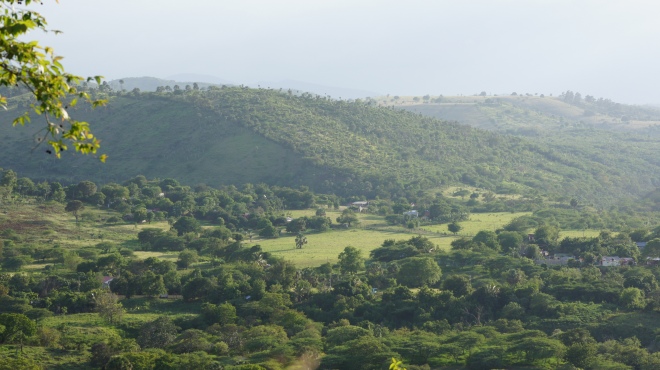
We find some “interesting” accommodation on our first night (see our Facebook page) and some wonderful accommodation on our last night….glamping by a lake.
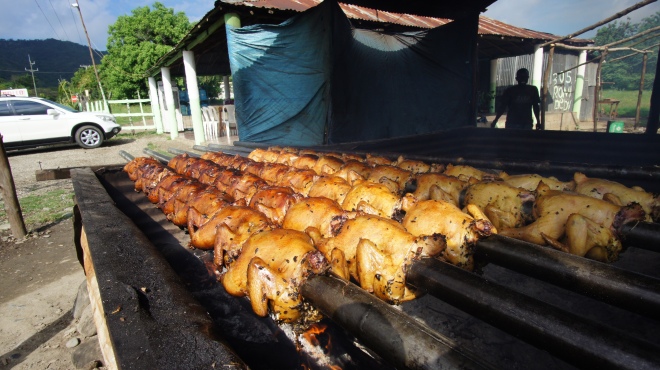
Whilst we’re not particularly city people we choose to swing by Santiago, a large city nestled in amongst the mountains.
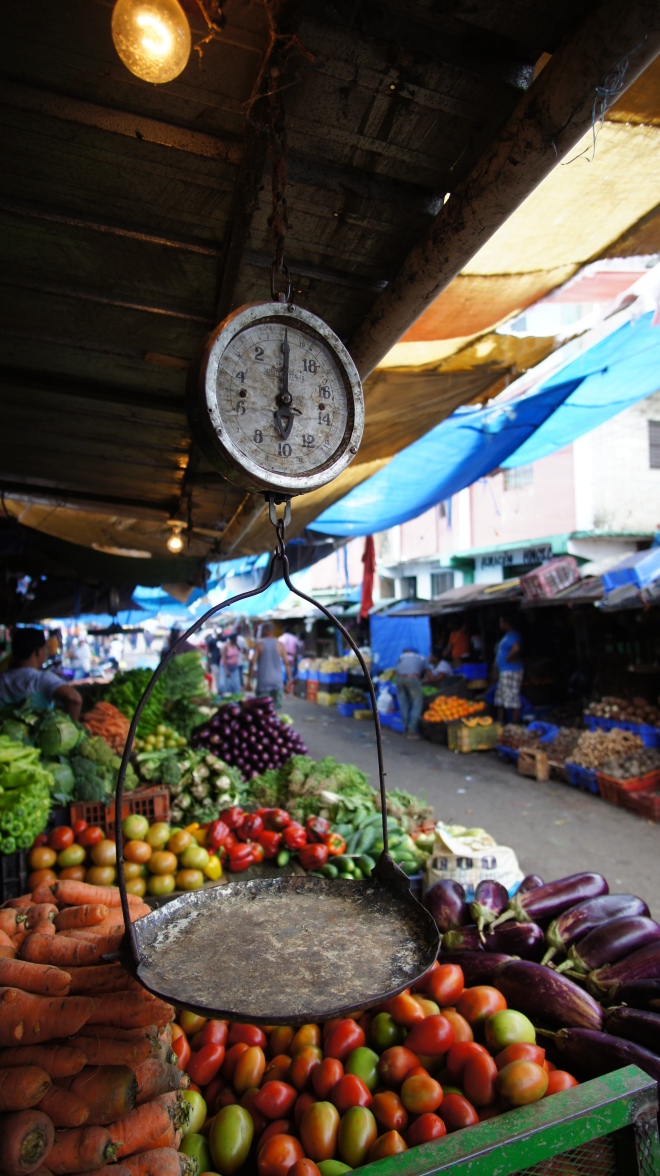
Much of the land surrounding here is used as farmland as the soil is extremely fertile. Whilst many vegetables are grown, another popular crop is tobacco. It’s been grown here for centuries and started being exported in 1679. It soon gained a reputation for being top quality tobacco but by the mid nineteenth century quality began to drop as the demand for mass cigarette production increased. Nowadays the Dominican has a booming high quality cigar industry that in fact sells more cigars than Cuba.
Back in Luperon and having been moored here for around two weeks we’ve learnt a lot about the local weather patterns. Early mornings are calm and still, as the sun rises we float upon reflective, glasslike waters. Mid morning as the sun rapidly heats the air the easterly trade winds begin to whip through the anchorage lasting all day. Without the winds to cool us we would be sweltering when the sun is shining and although no longer in the rainy season we do seem to be suffering an unusual amount of downpours. As the sun sets in the early evening the winds again die down to nothing for a calm evening and night. However off the coast things are different, katabatic winds generate over the land and rush towards the sea giving the opportunity to sail at night time. The next day the pattern generally repeats itself.
Having this knowledge on board helps us plan our next step, as always with sailing we are totally governed by Mother Nature. This stretch of our journey is particularly tricky as in order to travel east to our next port we must travel into the wind. We wait for a weather window when the winds are as calm as possible as to not be ploughing into strong winds and large waves.
Before we can leave however we must again have dealings with the comandante in order to obtain a despacho…a simple form with our personal details, our boat details and an allocated next port. These forms are a legal requirement and anyone trying to leave the harbour without one is stopped and made to return. The officials like to know exactly who is going where and when, and they can actually refuse to issue one of they feel the weather conditions are too dangerous for you to leave.
The forms are technically free to obtain, however we’ve heard the standard “tip” required in order for them to issue one is $15 per boat for an internal despatcho, and $25 for an international one.
We, along with our cruising friends, make our way to the comandante’s office which has extremely interesting access from the dinghy dock.
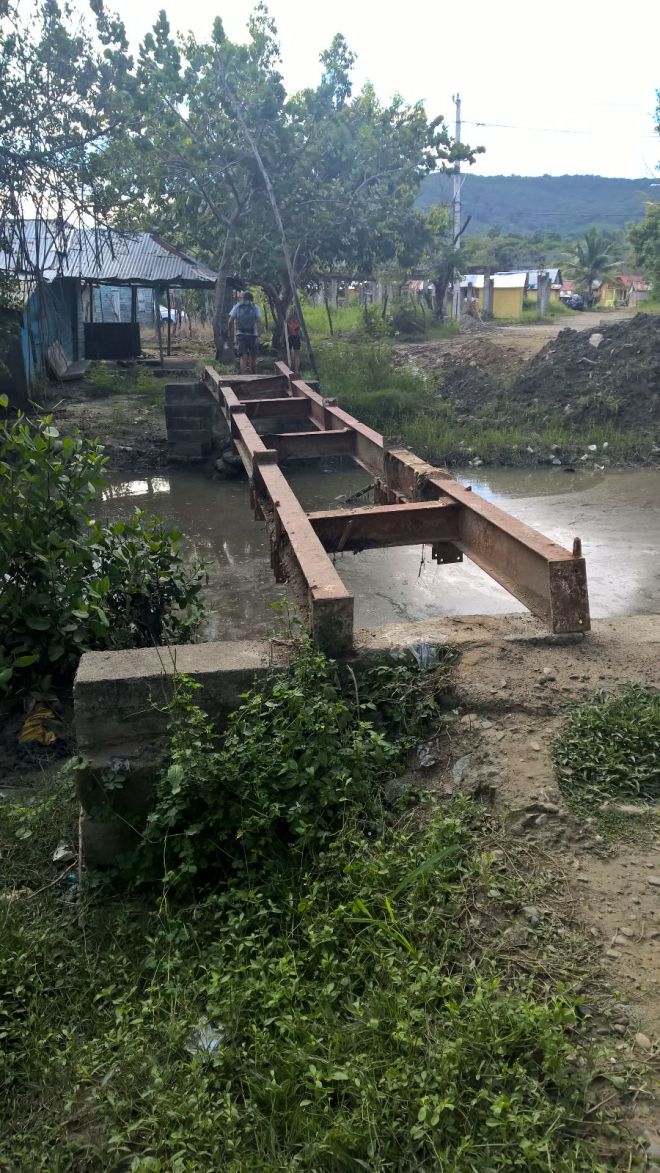
On arrival we’re told to go back down to the dock to speak with the comandantes there. We arrive on the dock to find two of the same men who boarded our boat when we arrived…the young male, and the intimidating large built man, neither of which speak English.
Luckily one of our fellow cruisers speaks Spanish and explains our requirements to them….three despachos, one for each of our boats. They protest and say it’s too late in the day to do it and that they don’t have any forms with them. When we explain that we will be leaving early the next morning they demand we come back in the morning to obtain the despacho as we must leave within one hour of it’s issue. Knowing they won’t be on duty early enough we negotiate for half an hour and a small tip to the younger more helpful man sees him head off on his moped to collect some forms. As he rides off I see in one of his pockets is a bottle of rum, in the other a handgun.
The larger intimidating man is continuously arrogant. His behaviour is not that of an official, or at least not how I consider officials should behave. He shouts to intimidate us, scowls and frowns at us as if we’ve done something terribly wrong. In fact we are just asking for a simple form to be completed which is what his employer demands of us and what he is paid to do.
For the next hour they very slowly fill out the forms with the required information and eventually hand them over to us. Collectively we leave them a tip simply because we’re relieved that it’s over and in the hope that they will turn a blind eye to us not leaving within an hour of receiving the form.
Our experience has shown these “officials” make your life very difficult just because they can. They will refuse to do their job in order for you to tip them to get what you need. In hindsight maybe we should not have tipped, maybe if we didn’t play their game they would learn to do their job properly. Who knows maybe they would still end with a tip in their hand, but it would be because of a good service and not through fear and intimidation.
All over the Dominican people see us “gringos” as walking banks. We’re regularly asked for money, charged gringos prices instead of local prices and encouraged to give tips left right and centre.
I’ve been to the Dominican twice before, each time staying at all inclusive resorts when I was younger. You’re protected on those kinds of holidays to the extent where you tend to not really see the true culture and country. You’re simply shovelled around from one tourist trap to the next so I remained oblivious to the reality here. My honest opinion now is that whilst the country may cater well for a cheap and cheerful all inclusive package holiday, it has a long way to go before it’s truly cruiser friendly.
It seems a lot of locals simply think in the short term and don’t give any consideration about the long term effects their behaviour has on their economy. Are many of these people poor and desperate? Yes, but many of them are just greedy and are quick to take advantage when allowed. As always with travelling abroad you really do have to stay alert.
Returning to the boat with our despacho we discuss our plans. Our passage to Samana is estimated to take about 24 hours so there’s no avoiding the daytime winds, we just have to hope they’re as light as the forecast predicts and that any katabatic wind coming off the land at night time may enable us to sail.
In the morning we leave in company with our buddy boats Mauna Kea and Temerity and our journey goes well. We all take slightly different routes but remain within a mile or two of each other. The first leg of the journey sees reasonably light winds on the nose so we motor. As the sun sets we’re expecting to see the katabatic winds pick up but unexpectedly the trade winds strengthen miraculously out of the northeast meaning we can sail! We cruise along so quickly during the night that in the early hours we actually have to reef our sails in order to slow down as we’re due to arrive too early.
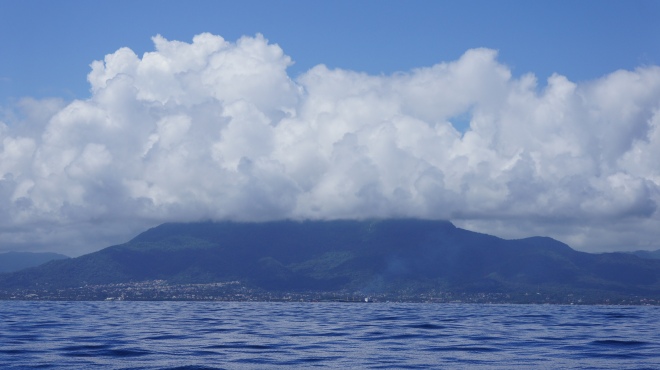
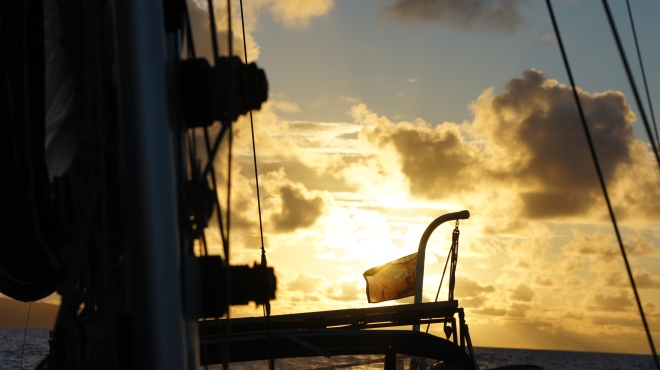
On arrival at Samana bay I keep my eyes peeled for whales nearby. Annually thousands of Atlantic Humpbacks migrate to the warm water here to find a mate and give birth to their young. We’re late in the season though and unfortunately there are none visible here today.
We anchor in Samana harbour and clamber into bed tired from our journey, only to be woken up half an hour later by a comandante asking for our despacho from Luperon. Bleary eyed I hand it over and then return to bed having been told that if we chose to stay here overnight we’d have an anchorage charge to pay.
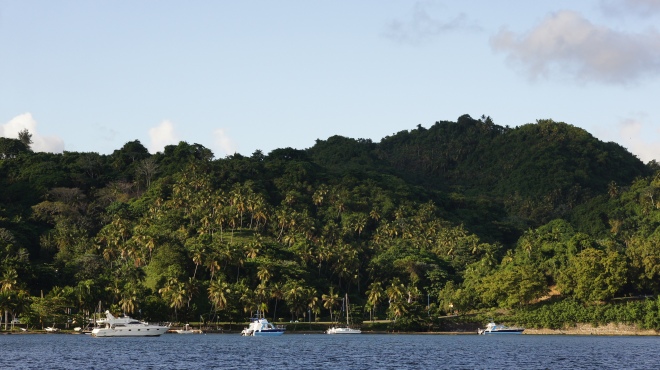
The next day at the break of dawn with lift the anchor and head around to Puerto Bahia Marina less than a mile away. It’s more costly than the anchorage fee in the harbour but at least here you get something for your money….luxury.
We decide to use it as our base for exploring this end of the island, but with such a nice marina it’s hard to tear ourselves away from it.
We meet up with some other friends on Malolo who are also staying at the marina and a group of us have a lovely day out aboard their catamaran to Los Haitises National Park. Can you believe that even for a day trip out of the marina you have to obtain a despacho?! It’s bureaucracy gone mad! Thankfully here at the marina the allocated comandante is far more professional, efficient and polite.
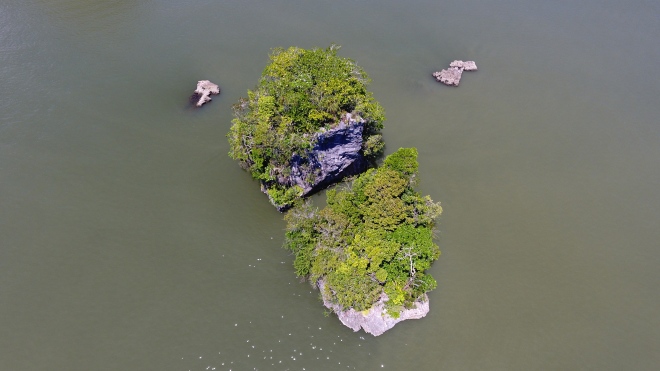
A weather window appears for a crossing to Puerto Rico and we rush around one day trying to get everything up together so we can leave the following morning. I personally just don’t feel ready to leave yet, we’ve barely made the most of the marina facilities, I haven’t seen Santo Domingo the capital city and it all just feels a bit rushed.
Whilst completing last minute online admin Ben checks the entry process for Puerto Rico and establishes that as UK citizens entering US territory on a sailboat we must have a visa. This changes our plans instantly, we can’t leave tomorrow. We must obtain a visa first. It’s a blessing in disguise…
I will get to swim in the rooftop infinity pool
I will enjoy a massage in the spa
I will visit Santo Domingo after all!
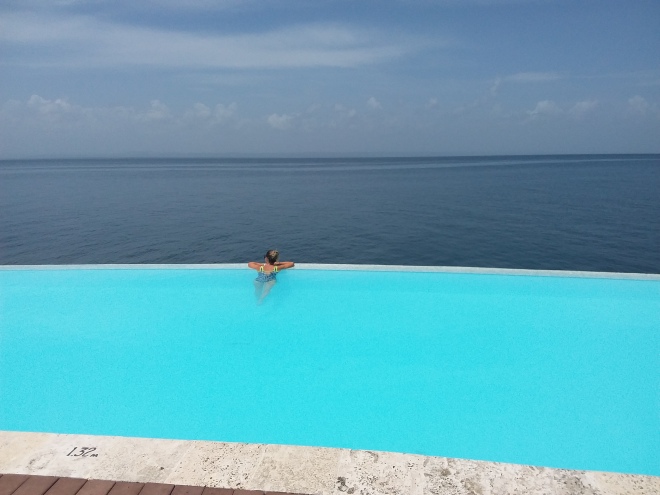
The visa process usually takes three months but there’s a small chance we may be able to have an emergency appointment. In order to apply we have pay the visa fee of $320 and then request the emergency appointment. If we’re not successful we will have wasted $320 as the next normal appointment is in three months time by which point we will be 500 miles away having skipped past Puerto Rico.
We take the risk, pay the fee and keep our fingers crossed.
Whilst waiting hear back from the authorities we make the most of the marina, socialise with friends and carry out work on the boat.
After a week or so I receive an email from the embassy…. miraculously I have managed to blag us an emergency appointment in Santo Domingo (despite the visa website pointing out that poor planning is not justification for an emergency requirement)!
We rush to the marina front desk and ask for a hire car ASAP. Within twenty minutes we’ve packed our bags, secured the boat, given the keys to our friends in case of an emergency, picked up the hire car and we’re en route to Santo Domingo over 100 miles away.
We’re late to our first visa appointment but they’re accommodating and we successfully have our photos and fingerprints taken. The day after next we’re scheduled in for the emergency interview so we have a day spare to explore Santo Domingo. We pop online and choose a hotel in the Colonial Zone, it’s perfectly located and has a large secure garage for our car too.
A short walk from the hotel we explore the local streets, shops and eateries. The architecture in the colonial zone is stunning. Gorgeous old buildings, many with balconies overlooking the narrow streets. There are places of worship, statues, parks and castles to explore too.










At the museums we learn about amber and the indigenous larimar stone that are both mined here in the Dominican Republic and after much deliberation I treat myself to a larimar ring. We also visit the rum museum where they make the spirit on site and offer free samples.
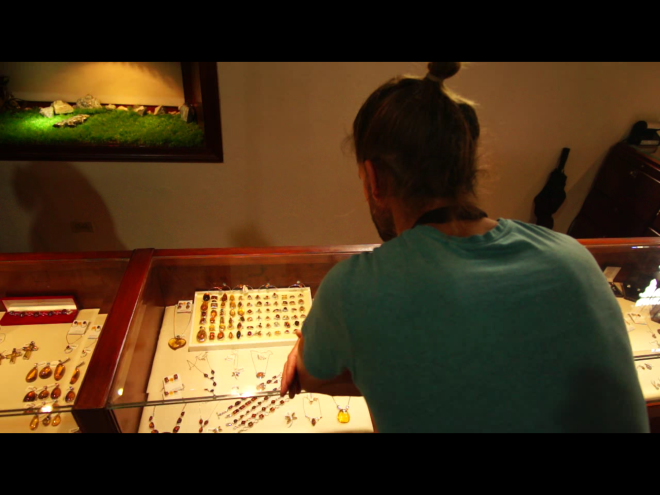
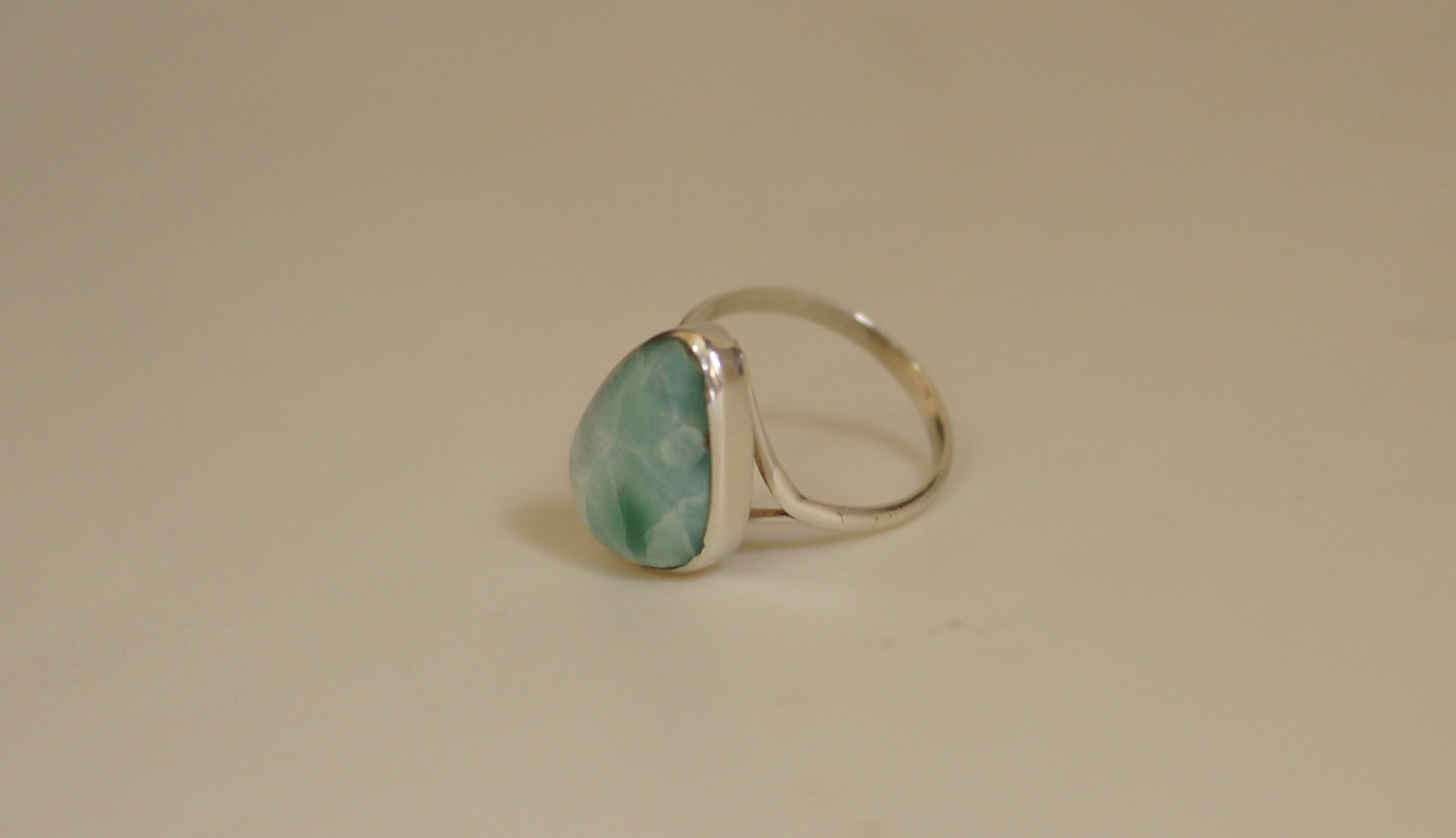
The next day we make our way to the Unites States embassy where we have a casual “interview” that takes place at a glass partitioned counter much like you see at a bank. They authorise our visas and we’re advised they will keep hold of our passports and within a week they will be sent to a collection box half an hour’s drive from our marina where we will need to collect them. We were hoping we could obtain them here and now so we explain that we aim to leave the next day as there are safe weather conditions for us cross to Puerto Rico. The lady we have been interviewed by is really helpful and expedites our passports. Within fifteen minutes we have our passports returned to us with a US visa valid for ten years.
Passports in hand we drive for three hours back to the marina where we meet up with our friends and prepare the boat for tomorrow’s departure.
Puerto Rico…..we’re coming to get ya!
